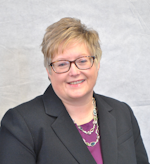This past summer, in the wake of the COVID-19 pandemic, officials from the U.S. Green Building Council and Greenbuild Conference and Expo (www.greenbuildexpo.com) showrunners made the difficult decision to switch the 2020 conference from an in-person education and trade show to a virtual event in mid-November. It was preceded by three virtual summits: the Green Business Summit, the Resilience Summit and the Global Health and Wellness Summit.
The three-day conference featured virtual networking events and more than 160 education sessions led by industry experts covering the latest trends and critical topics, including renewables, materials, indoor air quality, climate adaptation, the pandemic's impact, and more.
Keynote addresses were delivered each day by sustainability leaders, such as Christiana Figueres, architect of the Paris Climate Agreement; USGBC’s President and CEO Mahesh Ramanujam; design innovators Catherine Huang, Julia Watson and Kotchakorn Voraakhom; and gender equity and LGBTQ advocate Dr. Paula Stone Williams.
Throughout this year’s virtual event, USGBC delivered key updates intended to help push the industry closer to a regenerative future as outlined through LEED Positive, which encourages development that allows buildings to become a vehicle for environmental restoration and repair.
“We must do all we can to leverage our tools and resources to scale up reductions in carbon emissions associated with buildings, communities and cities,” said Ramanujam. “LEED must evolve qualitatively and quantitatively. Qualitatively, it must transition from strategies that reduce the harm done by buildings to strategies that cause no harm and are regenerative by design, ensuring our buildings are actually giving back more than they take.
“And quantitatively, it will need to accelerate and increase its impact ten to a hundred-fold by leveraging our Arc performance platform. The future of LEED is LEED positive.”
To obtain more insight on this inaugural event, we spoke with Kim Heavner, USGBC’s vice president of conference and events.
HPAC: How many people attended the virtual event? How about the three summits? Was the online attendance what you expected?
Kim Heavner: This was the first time since Greenbuild launched in 2002 that the conference took place virtually. It was an exciting challenge for us and our partners at Informa Connect to find ways to transition that in-person experience into a virtual format.
We’re still in the process of collecting and analyzing the feedback from our attendee surveys. However, initial feedback from attendees indicates that this year’s content was incredibly engaging and relevant to the challenges the industry is currently facing and will continue to tackle.
Given that this was the first year Greenbuild went virtual, we weren’t sure what to expect in terms of attendance and engagement. We were very pleased to see the green building industry from across the globe show up each day to participate and help advance the important work that’s so critical to helping us shape a more sustainable world. With thousands of attendees joining the newly reimagined Greenbuild virtual experience, we are thrilled with the accessibility, attendance and participation.
The Greenbuild summits, previously held the day before the face-to-face event, were instead held over multiple weeks in advance, allowing new audiences to join each of these specialized experiences resulting in record attendance. And similarly, when the event is conducted in person, the keynotes and USGBC Leadership Awards were top-attended sessions as well.
With Greenbuild education sessions available for on-demand replay for 30 days post-event, we continue to see engagement with the more than 150 sessions and keynotes.
HPAC: Which sessions seemed to resonate more with attendees?
KH: The pandemic has put a spotlight on how sustainability can support health. I think attendees were really focused on making sure they understand the latest strategies and best practices to help them integrate those into projects moving forward. And this aligns with the attendance trends we experienced, with top-attended session topics related to COVID-19, carbon and building trends in LEED.
We saw a lot of interest in our LEED sessions, particularly since we were focused on sharing insights and case studies from our new Safety First pilot credits, LEED Zero and general rating system updates.
One highlight was a USGBC session focused on equity. There’s a lot of interest in understanding how green building can play a role in addressing social, health and economic disparities, and we’ve been encouraging those discussions throughout the year.
During USGBC’s Greenbuild session on the topic, we were excited to finally introduce and dive into All In, a new USGBC program that will help shape how our industry can better support underserved and underrepresented communities. As part of the launch of All In, we announced a commitment to fund 500 professionals from those communities as they earn their LEED credential.
The next step in this new program is to get feedback on our All In actions and commitments, which can be viewed online (www.usgbc.org/all-in).
We truly believe you can’t have a sustainable world if it is not also an equitable one. This session was an important note to end the year on but also helps to set the tone and priorities for 2021 and beyond, which was received very well.
HPAC: Does USGBC believe there is a case to be made about a more hybrid approach (virtual + in-person) for events after the pandemic?
KH: This year has taken a tremendous toll on our friends in the event and hospitality space, and we look forward to coming back together in-person and bringing business back to our communities when the time is right. This year has shown us, though, that there are opportunities to extend our reach and equitable access through digital offerings, and there’s so much opportunity to offer experiences that continue to be safe, engaging and inclusive.
Greenbuild and USGBC will be exploring and planning future opportunities such as hybrid options, which allow the best of both worlds; experience and expanded access for global audiences. We’ll certainly be exploring what elements make sense to keep moving forward.
HPAC: Is there a date/location for 2021?
KH: Our partners at Informa Connect are monitoring COVID-19 implications, CDC guidelines, as well as local authority and venue-specific regulations. Health and safety remain our top priority; Greenbuild will announce 2021 dates, locations and event plans in early 2021.
############










